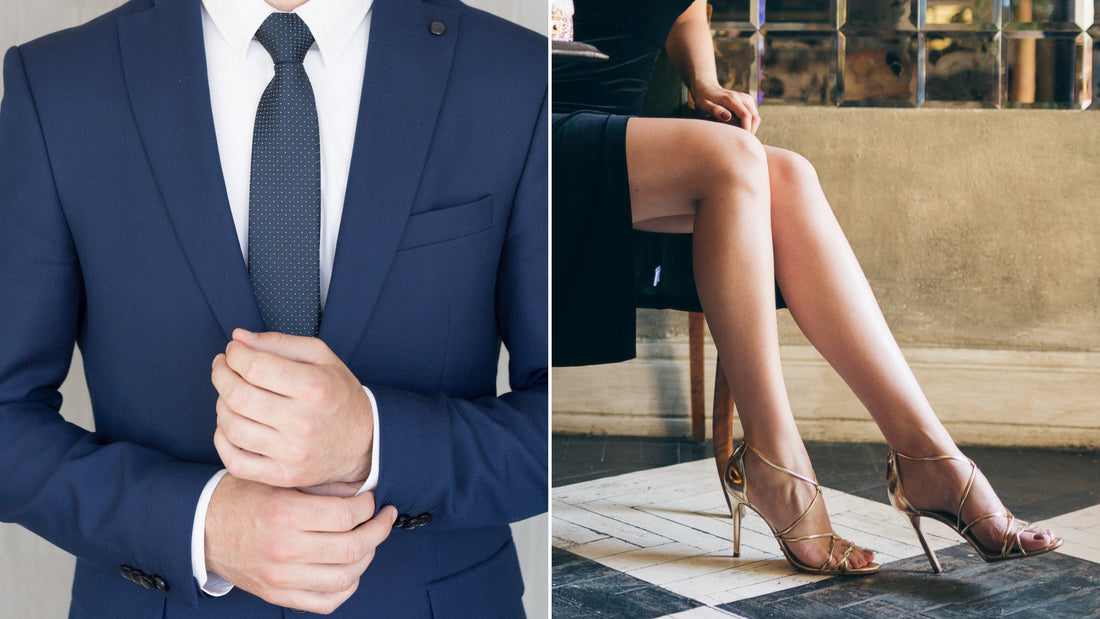Dear Readers,
When it comes to attending a formal or special event, few things create more uncertainty than the dress code. What may seem like a straightforward instruction can quickly become a source of stress, especially if it’s your first time navigating such an occasion.
Dress codes are often viewed as intimidating because they aren’t always clearly understood. The etiquette around them varies depending on culture, occasion, time of day, and even the personal wishes of the host. While there are standard guidelines to follow, the most important rule is simple: always respect the instructions stated on the invitation.
The host is in charge of setting the tone and theme of their event, and their preferences should be followed, even if they differ from cultural norms. For example, while many cultures associate black clothing with mourning and funerals, a host may request guests wear white to reflect the personality or wishes of the deceased. In such cases, it’s both respectful and appropriate to honor their specific guidance.
Still, some dress code rules seem less clear than others. To help ease your worries, here are answers to top 3 of the most frequently asked questions on dress code etiquette.
1. CAN I WEAR OPEN-TOE SHOES TO AN EVENING PERFORMANCE AT THE THEATRE?
Short answer: Not traditionally.
Evening events held after 6 PM call for more formal attire, and this includes footwear. Closed-toe shoes have long been considered the standard for such occasions, particularly when attending the theatre, opera, or a formal dinner.
However, fashion has evolved over the years, and many modern interpretations of formalwear have allowed for more freedom. You will often see celebrities and public figures attending evening galas, red carpet events, or awards ceremonies in open-toe high-heeled sandals that are still elegant and polished.
So, what’s acceptable? If the open-toe shoes you have in mind are dressy, structured, and made from materials like satin, suede, or embellished leather, they may be appropriate for less traditional venues. On the other hand, casual open-toe footwear, such as flip-flops, espadrilles, or pool slides, should always be avoided in any formal setting.
2. IT'S MY FIRST TIME BUYING A TIE. SHOULD I CHOOSE A NEUTRAL COLOUR LIKE BLACK?
While black may seem like an elegant and timeless option, in the world of ties, it has a specific connotation. A black tie is traditionally reserved for funerals or formal uniforms, such as those worn by chauffeurs or security personnel. It is not generally recommended as an all-purpose accessory.
When selecting your first tie, consider your wardrobe as a whole. A navy blue tie is a classic and versatile choice that pairs well with a variety of suits, including navy, grey, and lighter summer tones like beige or linen. This shade works across seasons and occasions, from job interviews to weddings. You can also explore ties with subtle patterns, such as dots or fine stripes.
3. WHAT IS THE DIFFERENCE BETWEEN BLACK TIE AND WHITE TIE DRESS CODES?
This is one of the most commonly misunderstood aspects of formal dress, and the distinction is important, particularly for prestigious events.
BLACK TIE is the more familiar of the two. It represents formal evening wear but allows for some personal interpretation.
For men, this means a classic tuxedo or dinner jacket, a white dress shirt, black formal trousers, a black bow tie, and polished black shoes, preferably patent leather.
For women, a long evening gown and high-heels is the standard.
WHITE TIE, on the other hand, is the most formal dress code still in use today and is typically reserved for high-society events, such as state dinners or formal balls.
For men, white tie attire includes a black tailcoat and matching trousers with a satin stripe down the leg, a stiff white wing-collared shirt, a white waistcoat, a white bow tie, and black patent leather shoes.
For women, the expectation is a full-length ball gown, often accompanied by long gloves and understated yet elegant accessories. The overall appearance should convey maximum formality and grace.
Understanding dress codes can be daunting, but they serve an important purpose. When we dress according to the expectations of an event, we are doing more than just following rules - we are acknowledging the importance of the occasion and expressing respect for our hosts and fellow guests.
When in doubt, consult the invitation, observe the tone of the event, and don’t hesitate to ask for clarification. Dressing appropriately is never out of style - it’s a timeless gesture of consideration.
Yours sincerely,
Katarina
Receive new etiquette tips from Katarina every week, sign up here.
Get Your Bespoke Etiquette Plan ✨
Struggling with etiquette in social or professional settings? THE GRACE GUIDE is your bespoke solution - tailored advice crafted just for you. Whether you're preparing for a formal event, a career milestone, or simply refining your presence, this custom etiquette plan will equip you with the confidence and grace to shine.
➡️ Personalised guidance for your unique concerns
➡️ Step-by-step solutions you can apply instantly
➡️ Cultural awareness to make the right impression anywhere
➡️ Delivered in just 5 days - ready when you need it
🎁 Bonus: Ebook Katarina’s Guide to Western Dining Etiquette for FREE
Get your Grace Guide here.

